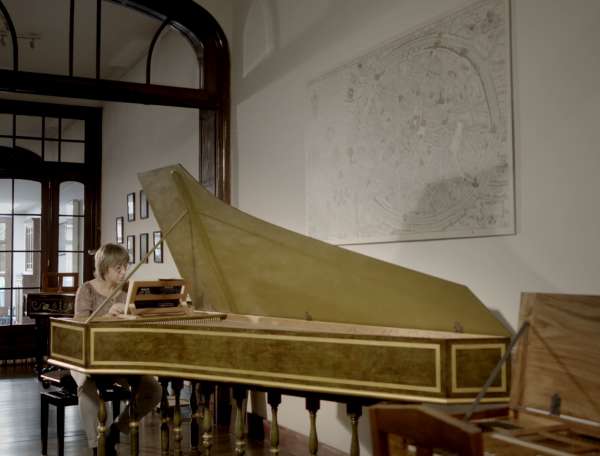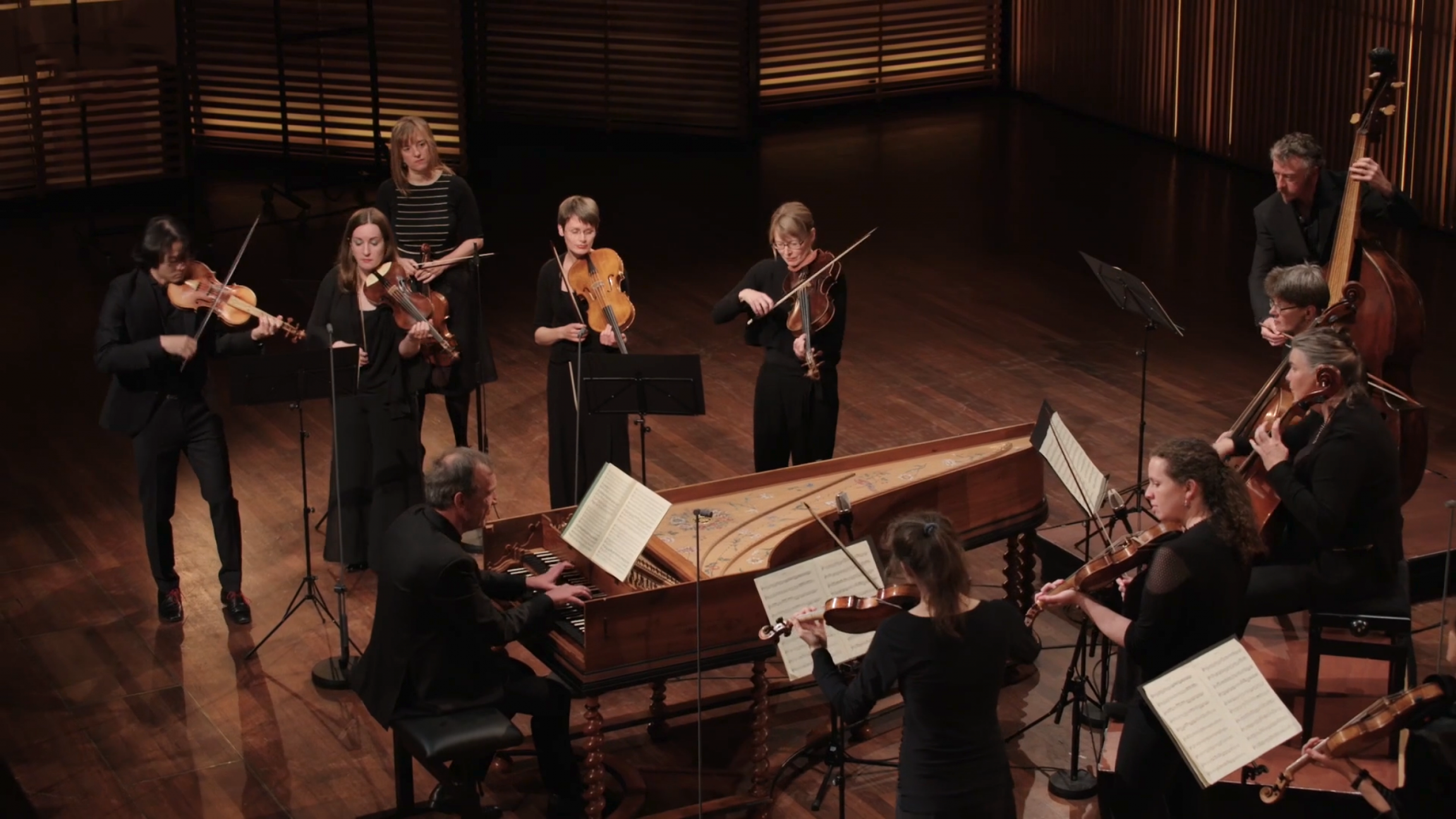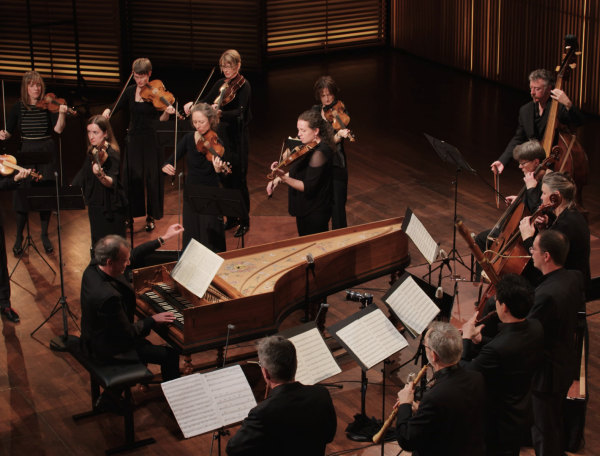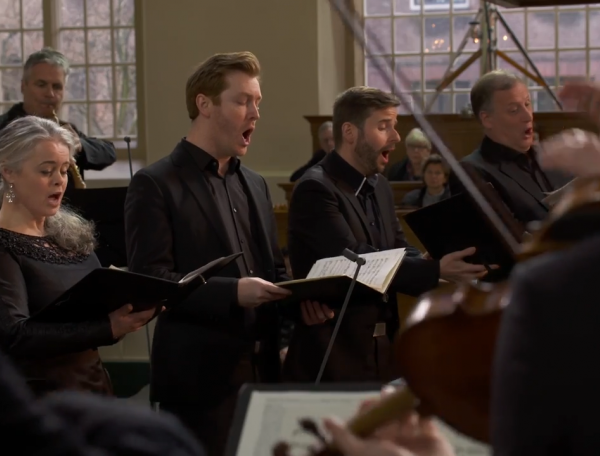

Orchestral Suite No. 3 in D major
BWV 1068 performed by the Netherlands Bach Society
conducted by Lars Ulrik Mortensen
Muziekgebouw aan 't IJ, Amsterdam
Behind the music
With a certain Air
Splendour and elegance is followed by festivities
If it was already an anachronism to stick the word ‘orchestral’ onto this festive suite, Lars Ulrik Mortensen now goes one step further – tearing the label off the score, throwing it resolutely in the bin and reducing the instrumentation to a minimum. There is, of course, no symphonic crowd in this performance, but neither do trumpets, timpani or even oboes put in an appearance, as Bach only added these instruments around 1730. Mortensen does not regret the loss of the timbre of the wind instruments in the least. Played only by strings, the work sounds trim and transparent; precisely how the controversial Dane likes it.
The well-known Corellian Air brought justifiable fame to the suite – how subtly the second violins and violas caress one another! – but the opening section is the real attraction. In Bach’s interpretation, the French overture à la Jean-Baptiste Lully is incredibly long, and the first violin unexpectedly takes up soloist space in the fast sections. The following four dances, which together form not even half the whole piece, are rather simpler than Bach’s models. These energetic smaller parts have a ‘rustic’ effect, in Mortensen’s view. Put simply – the splendour and elegance is followed by festivities!
Orchestral Suites, BWV 1066-1069
Although it is tempting to talk of the Four Orchestral Suites, it could well be the case that Bach wrote another one or two, or even ten of them. Because unlike the ‘Brandenburg’ Concertos, these Four Orchestral Suites are not related to one another. Specialists like Joshua Rifkin even regard them as arrangements of pieces from other genres. Bach simply wrote presentable festive music for the wealthy courts of Weimar and Cöthen; occasional music that later found a new home in the repertoire of the Collegium Musicum.
Bach’s Suites (series of stylised dances) exude the style and atmosphere of the dance music written by Lully at the court of Louis the Fourteenth. Nowadays, we call this a suite, but at the time it was known as an Overture, or opening piece. As a tribute to the king, such a succession of dances began with a stately opening that had a remarkably staccato rhythm – to which the king could make his entrance – followed by a somewhat faster, fugal middle section.
One interesting hypothesis about the relative dearth of suites by Bach is that he could not master the genre sufficiently. The model came directly from the Paris of Lully and would brook no competition. Particularly the pompous overture – with its slow-quick-slow, fugal middle section and ‘French’ rhythms – is typical… and maybe too restrictive for our young German Kapellmeister.
- BWV
- 1068
- Title
- Ouverture in D major
- Epithet
- Orchestral Suite No. 3
- Instrument
- harpsichord
- Genre
- orchestral works
- Serie
- Orchestral suites
- Year
- unknown
- City
- Weimar/Cöthen?
- Special notes
- This suite has been handed down to us in a version with wind instruments (oboes, trumpets and timpani). Scholars suspect that Bach added the wind parts later, meaning that there was an original version just for strings.
Extra videos
Vocal texts
Original
Translation
Credits
-
- Release date
- 17 May 2019
-
- Recording date
- 15 October 2017
-
- Location
- Muziekgebouw aan 't IJ, Amsterdam
-
- Harpsichord and direction
- Lars Ulrik Mortensen
-
- Violin 1
- Shunske Sato, Emily Deans, Lidewij van der Voort
-
- Violin 2
- Anneke van Haaften, Paulien Kostense, Annabelle Ferdinand
-
- Viola
- Deirdre Dowling, Femke Huizinga
-
- Cello
- Lucia Swarts, Barbara Kernig
-
- Double bass
- James Munro
-
- Director
- Lucas van Woerkum
-
- Music recording
- Guido Tichelman, Bastiaan Kuijt, Pim van der Lee
-
- Music edit and mix
- Guido Tichelman
-
- Camera
- Jochem Timmerman, Martin Struijf, Thijs Struick
-
- Lights
- Zen Bloot
-
- Assistant director
- Stijn Berkhouwer
-
- Set technique
- Dennis Hoek
-
- Data handling
- Jesper Blok
-
- Project manager nep
- Peter Ribbens
-
- Interview
- Onno van Ameijde, Marloes Biermans
-
- Producer concert
- Marco Meijdam
-
- Producer film
- Jessie Verbrugh
Discover
Help us to complete All of Bach
There are still many recordings to be made before the whole of Bach’s oeuvre is online. And we can’t complete the task without the financial support of our patrons. Please help us to complete the musical heritage of Bach, by supporting us with a donation!

